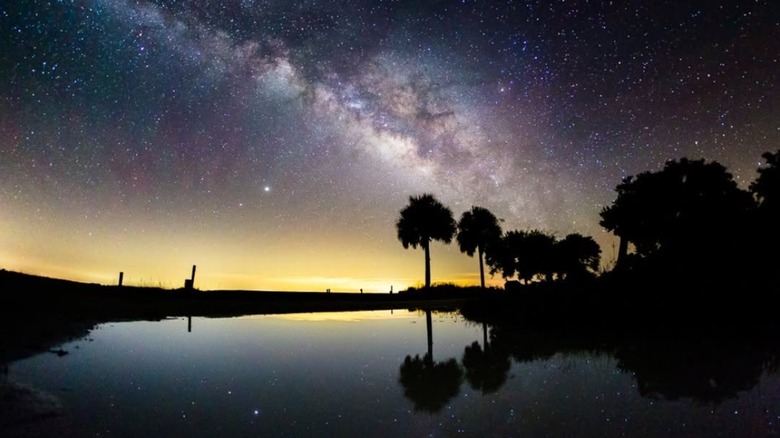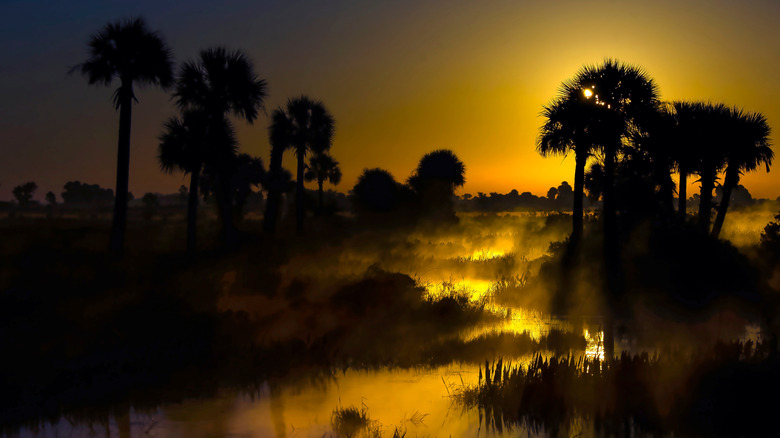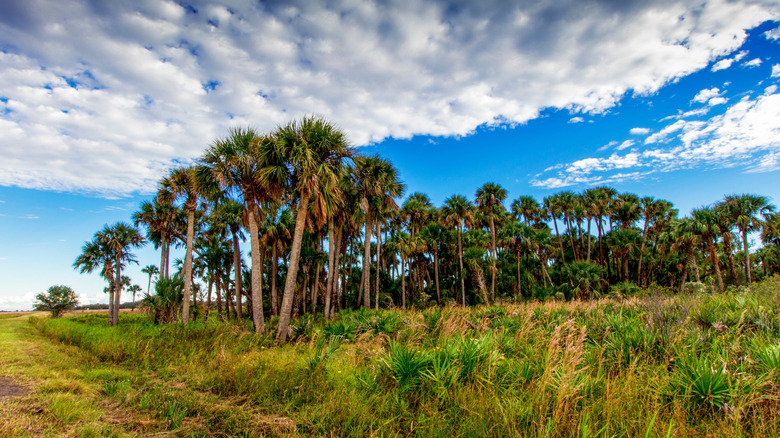This Wildly Underrated Preserve Offers Unmatched Night Sky Views In One Of Florida's Least Light-Polluted Areas
Since the dawn of time, the observation of the night sky has been an incommensurable source of fascination, wonder, and reverence, the stage of countless legends and myths. A legacy that remains in the names of the constellations that dot the celestial sphere -– think about Cassiopeia, Andromeda, and Perseus, beloved protagonists of Greek mythology. Today, notable advancements in astronomical technology — one of the latest is the launch of the powerful James Webb Space Telescope in 2021, stationed nearly one million miles from Earth –– have unveiled galaxies far beyond our solar system and are pushing the boundaries of the discernible universe a little farther each time. Yet, for the everyday stargazer, delving into the secrets of the Milky Way might not be as easy as it once was, with increasing light pollution and urban sprawl among the main culprits.
Luckily, some places around the world have managed to retain their natural darkness, free from intrusive artificial lights, and are now recognized as valuable natural, historical, and cultural assets deserving protection by international programs such as the International Dark Sky Places (IDSP), designated by the International Dark Sky Association. Among these is Kissimmee Prairie Preserve State Park in Central Florida.
A pristine yet widely accessible 54,000-acre natural reserve, less than a two-hour drive from the top attractions of the Orlando area. These include Disneyworld, Universal Studios, the town of Kissimmee, hailed as an outdoor paradise far from the Orlando crowds by Travel Channel host Samantha Brown, and the pristine beaches of Cape Canaveral National Seashore, one of Florida's longest stretches of coastline, along the iconic Space Coast. Plan your visit wisely to witness the thrilling spectacle of a rocket launch.
Kissimmee Prairie Preserve, how and when to experience the most breathtaking night sky
As one of the largest state parks in Florida, encompassing 54,000 acres of land — second only to Fakahatchee Strand Preserve State Park — Kissimmee boasts an incredible diversity of flora and fauna, including several vulnerable species. It is also one of the three Dark Sky Places in the state — alongside Big Cypress National Preserve, a wildlife-rich area similar to Everglades National Park but free to enter –- earning a reputation as a true sanctuary for wildlife enthusiasts and night lovers. Still, strict park regulations are in place to ensure that this area remains one of the darkest places in the world.
Only red spectrum lights are allowed after sundown (so no blue, white, or yellow lights, such as standard LED or fluorescent flashlights, or phone screens without red filters), and access after this time is strictly regulated and available only under three conditions: reserving a campsite, booking an astronomy pad, or holding a Florida State Parks Family Annual Pass. You might need to contact the preserve staff or the ranger on duty to receive an after-hours permit and additional information. However, the effort will be more than rewarded by thousands of stars — on clear days, you can even distinctly spot the Milky Way. Mars, Venus, Mercury, Saturn, and Jupiter are visible after sunset, before sunrise, or during the night, depending on the time of year.
And the best part? Most of them can be seen with the naked eye or a simple pair of binoculars — no need to splurge on an expensive telescope or professional gear. For optimal sky conditions, check online astronomical forecasting tools. Clear Sky Chart gives you a good overview of atmospheric conditions that might affect star visibility, such as cloud coverage, humidity levels, and wind.
Planning your visit to Kissimmee Prairie Preserve
Spending the night –- or even a couple of days -– in the Kissimmee Prairie Preserve is undoubtedly a once-in-a-lifetime experience. Take some time to plan the fundamentals of your trip. While getting there is quite straightforward –- the park's main entrance is conveniently located off US Highway 441, roughly 30 minutes north of Okeechobee and under two hours south of Orlando – finding the right accommodation might take a little bit more organization.
Campsites at Kilpatrick Hammock Campground (including equestrian sites) or astronomy pads (specifically designated for night sky observation), both located inside the prairie preserve, tend to run out quickly, especially during the dry months (roughly from November to April), which partially coincides with the so-called "Milky Way season" – a.k.a. when the densest and most visible part of our galaxy rises above the horizon in this part of the Northern Hemisphere. If a comfortable bed and upgraded facilities are part of your outdoor vacation idea (all while minimizing light pollution), Timberline Glamping might be your answer. The remote primitive campsites offer a more rugged experience.
Once there, renting a bike is a great way to make the most of the 100 miles of trails winding through the prairies and hammocks (be aware of park vehicles, pedestrians, and horseback riders along the paths).In addition to overnight stay costs, admission to the preserve ranges from $2 for pedestrians and bicyclists to $4 per vehicle. Although the fees are minimal, remember to bring exact change to avoid any unpleasant surprises.


